

Ted Tahquechi interview
By Ross Sillifant
(2016)
Q: For the benefit of our readers, be so kind as to introduce yourself and give us a little background history on your good self.
Ted Tahquechi: My name is Ted Tahquechi. I started working in the games industry out of college in the late 1980’s. My first job was a tester at Atari Corp. in Sunnyvale, Ca., with many of the Lynx games as well as some of the ST and Falcon games. While at Atari, I worked my way up the ranks out of the test department and into the development side. I held the titles of Associate Producer, Producer, and finally Senior Producer. I was responsible for completing some of the later Lynx, Falcon, and Jaguar games. The role of the Producer was to oversee all aspects of the development of a game from concept and design through development and delivery. Towards the end of the Atari era, I departed and worked for Accolade in San Jose, Ca. and then I worked with Mattel Toys for their electronics division where I was responsible for Hot Wheels-branded games.
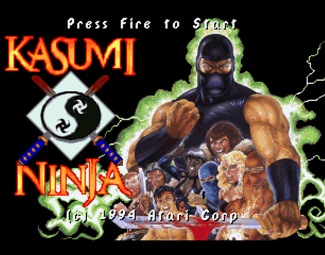 Q: I’d like to ask about Kasumi Ninja - a title which changed drastically from what appeared to be a pretty generic-looking 2-D fighter in
the very early screenshots shown to the UK Press, into something that seemed to be Atari's answer to needing a Street Fighter 2 or Mortal Kombat II type of game on the Jaguar, which also showcased the machines impressive 2-D abilities in terms of parallax scrolling, use of colour, high resolution backdrops, etc, but appeared rushed in true Atari style, in order to get product on the shelf.
Q: I’d like to ask about Kasumi Ninja - a title which changed drastically from what appeared to be a pretty generic-looking 2-D fighter in
the very early screenshots shown to the UK Press, into something that seemed to be Atari's answer to needing a Street Fighter 2 or Mortal Kombat II type of game on the Jaguar, which also showcased the machines impressive 2-D abilities in terms of parallax scrolling, use of colour, high resolution backdrops, etc, but appeared rushed in true Atari style, in order to get product on the shelf.
Ted Tahquechi: Before I go any further, you need to know that I won’t be throwing anyone under the bus in this interview (sorry), nor will I name names or place blame in any way. These are my personal observations and recollections from the years I spent at Atari Corp. If you are looking for blame or gossip,
there is ample information and other interviews which cover the shortcomings of the Jaguar hardware and the missteps in the business practices at Atari Corp. Now that I have that off my chest, here we go…
You are right on target with your observations about Kasumi Ninja, but before I answer your specific question, let’s talk about the state of the games industry, the Jaguar, and Atari Corp. at that time.
From the early prototype days of the Jaguar console hardware, Atari management always had the direction that the Jaguar (as you would expect) should stand toe-to-toe with any console in the market, and have a compelling line of triple-A titles. There was always a conscious effort to provide variety in the types of games being developed for the Jaguar so that the customer could find something they recognized (arcade adaptations) as well as something new and unique to play. As you well
know, the Jaguar was primarily a cartridge-based console (at least until the release of the CD drive), and releasing titles on cartridge has an inherently long lead time compared to titles released on CD. In order to ensure holiday delivery of titles to retail stores, most games would have to be "code final" by the end of July, which gave ample time to manufacture the cartridges before November retail availability. This hard date meant that games that went Release Candidate (RC)
after July were not going to make retail availability for Christmas. With this in mind, the rush to market in many of the titles might make a bit more sense. In my experience, this hard date coupled with the immaturity of the Jaguar development environment led to a lot of the Jaguars early titles being rushed to market before their time. Development issues and time were not the only problems plaguing the Jaguar. However, here was a large desire and movement internally to
sign certain top-tier titles to the console, as the presence of these titles were a checkbox for many consumers considering the purchase of a new console. Unfortunately, because of the state of the development environment for the Jaguar, many developers would require budgets that were out of the scope of consideration by management, and those that did sign shortly thereafter ceased development due to - in numerous cases - the lack of technical support from Atari.
During these years in the games industry, fighting games were a hot commodity for any console. The presence of a top-tier fighter and a top-tier sports title could certainly ensure a successful console. As for Kasumi Ninja, the lack of a fighting game of any kind was hurting the Jaguar, so the decision was made to push the title to market sooner than it should have been. In any game, especially fighting games, balance is essential for a good play experience for the customer.
In a fighting game, each move should have a counter and the ability of the player to complete the counter to any attack is a fine balance of skill for the player to hit the proper combination of buttons (up, down, forward + A as an example) and timing. In the rush to market, Kasumi Ninja did not have nearly as much time as I would have liked in this crucial balancing phase. Towards the end of any project, art and SFX that were intended as placeholders generally get replaced or
updated, this was not the case for Kasumi Ninja in many respects. Graphically, there were a lot of “it is good enough” decisions that were made to hit the hard date for retail availability. This game, like most of the Jaguar titles, could have done with another six or nine months of tuning and polish before being released to retail.
Sorry if that was a long answer, but I felt that the context surrounding some of the decisions was important.
Q: Could you detail the development process for the game and what hurdles you had to overcome? For example, rumor had it you had something of a struggle with Atari to get the cartridge size you needed for the game, and also if the game lived up to your initial vision for it and what further play-testing could have addressed (such as perhaps rectifying sluggish controls?
Ted Tahquechi: This title was being done by an external developer in the UK, so day-to-day development for Kasumi Ninja for me revolved around constant contact with the developer, ensuring feedback and implementation of new features were being completed on schedule. Constant review of budgetary concerns and “feature
creep” are an overwhelming portion of day-to-day producer responsibility.
Cartridge size as I remember it was not really an issue; the higher resolution images had to have space to live on a cartridge and compression of the asset catalog can only take you so far before artifacting is present and unacceptable. The biggest concern for moving to a larger cartridge size was of course the per-unit cost increase. My vision for the title was quite a bit different than the one that was shipped. With any title in development, there is a finite budget, and
this budget has to be spread across not only the actual programming of the game, but the creation of the assets for the title. Development costs and adding more team members to the title to ensure a holiday retail delivery meant that sacrifices needed to be made in the talent used for the creation of the in-game characters. Many non-martial artists had to be used for the characters, and this made the overall look of the characters and the playability suffer in my opinion. At
the end of the day, the developer had never been involved in a fighting game, and programmatically, the sluggish controls for the game were a marked improvement over their initial implementation, but still were lacking in the quick responsiveness that any fighting game requires. Testing time would not have helped make the title better, but overhauling the routines for the controls and refining the timing for execution of many of the moves would have gone a long way to making the title
stronger. Some would be quick to blame the controller hardware, and that the combination of the switches used and the lacking ergonomic design of the controller would never lead to a compelling, quick response gameplay experience that a fighting game requires. I however am a firm believer in working with what you have and getting the job done, and I believe that given a reasonable amount of additional development time in the polish and tuning phase, the game could have been more
playable than it ended up being.
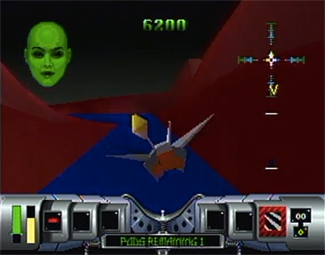 Q: Moving onto Cybermorph, which for many of us was something of a mixed bag - impressed by the morphing craft, free-roaming nature of the
game, impressive Gourad Shaded landscapes, etc, but surprised by the ugly design on buildings which felt out of place, no in-game music, somewhat abrasive sound fx (sorry), and repetitive speech (something made worse when Atari reduced cart size to 1 MB for the in-game pack on later releases). Also, navigation was made difficult by lack of a compass or map. I expect pressure was on to get the game ready for launch, but I’ve always wondered just how much focus, resource-wise, was
given to the sound FX, as Atari had been making a big deal out of Jaguar's CD-quality sound and powerful sound hardware. Yet this game lacked in-game music (as did Doom later), and I wonder if this was because of hardware limitations (DSP busy doing other tasks) or other factors in play?
Q: Moving onto Cybermorph, which for many of us was something of a mixed bag - impressed by the morphing craft, free-roaming nature of the
game, impressive Gourad Shaded landscapes, etc, but surprised by the ugly design on buildings which felt out of place, no in-game music, somewhat abrasive sound fx (sorry), and repetitive speech (something made worse when Atari reduced cart size to 1 MB for the in-game pack on later releases). Also, navigation was made difficult by lack of a compass or map. I expect pressure was on to get the game ready for launch, but I’ve always wondered just how much focus, resource-wise, was
given to the sound FX, as Atari had been making a big deal out of Jaguar's CD-quality sound and powerful sound hardware. Yet this game lacked in-game music (as did Doom later), and I wonder if this was because of hardware limitations (DSP busy doing other tasks) or other factors in play?
Ted Tahquechi: ) I didn’t actually have a lot to do with Cybermorph. As an early title like you mentioned, the time crunch for launch was tough on all the titles. Cybermorph as I remember was a technical demo that got morphed into a launch title,if you will excuse the pun. Cartridge size and the state of the development environment (like with all titles) was a huge concern. The addition of any sound was tough for developers, and I remember that the development team needed a few sounds to fill in as their budget for SFX was done. I could not tell you which ones were done by me at the time - I think a select sound or something was about it. The voice was done by the wife of the programmer if I remember correctly. Other than contributing a sound or two, I could not tell you the details of this particular title.
Q: Were you aware of the games origins on the ill-fated Atari Panther? If so (very long shot), do you know how far along the Panther version got?
Ted Tahquechi: If I remember correctly, the Panther version was the technical demo that eventually became Cybermorph. Other than that, I was asked not to discuss the Panther hardware.
Q: You've worked on a number of Jaguar titles (Cybermorph, Kasumi Ninja, Dino Dudes, etc) that often seem to split people right down the middle in terms of opinion, with those in favor appearing to 'appreciate' what was being attempted, whilst those against seemingly expecting a lot more from a 64-bit system, so I would like to hear your personal views on whether you feel Atari really 'over-played' the 64 bit marketing aspect with the Jaguar and in effect really created a rod for their own back, as they didn’t have the resources in terms of funds or teams, let alone development tools, to compete on level playing field with Sega, Nintendo, Sony, etc.
Ted Tahquechi: This is a bit of a philosophical question, and has a lot to do with the overall performance of the games industry during the transition from one “bit” platform to another. When you look at the PS2 and the Super NES compared to their predecessors, you see significant advances in console power and
graphics, but also execution of the titles. The teams and management that made the 8-bit consoles built on an infrastructure of implementation knowledge and a maturing set of development tools. It was the overall execution of the titles that made the 16-bit consoles compelling to customers; the games looked better and played better. The Jaguar didn’t have this history of completed titles and existing development teams in place when development on the first round of titles
began. Making matters worse, the developers struggled with the tools required to program the Jaguar games. Often, while working on the earlier games, the programmers could not sort out whether a bug they were seeing was in the hardware or the immature development environment tools. Many of the developers ended up ditching the tools shipped by Atari and writing their own development suite for the Jaguar before actually starting on the scheduled title.
Many of the teams that worked on the early Jaguar games were coming from the handheld Lynx development which had a vastly different development environment and graphical expectations. The Jaguar was jumping into the 64-bit deep end of the pool without learning how to swim first. Getting Lynx titles out the door was important, but it wasn’t critical like it was when the Jaguar hit the market. It keeps coming back to time, and giving the Jaguar the time it needed to get the first
round of titles where they needed to be, and even more importantly the development environment time to mature was not as important as getting the first 64-bit console to market. Consumers expected games that were graphically a quantum leap ahead of the 16-bit market, and equally mature from a gameplay standpoint. The Jaguar had the hardware but the execution and title selection was just not there.
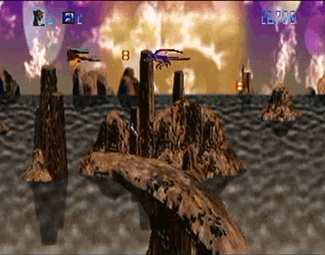 Q: As a tester on likes of Raiden and Crescent Galaxy - both previously planned for earlier Atari systems (Raiden for the Falcon and
Crescent Galaxy for the Panther), did it strike you as Atari simply being desperate to have a mix of titles ready for launch, no matter how they'd be received or how little they made use of the true potential of the Jaguar?
Q: As a tester on likes of Raiden and Crescent Galaxy - both previously planned for earlier Atari systems (Raiden for the Falcon and
Crescent Galaxy for the Panther), did it strike you as Atari simply being desperate to have a mix of titles ready for launch, no matter how they'd be received or how little they made use of the true potential of the Jaguar?
Ted Tahquechi: I cannot speak to the decisions about which titles were planned for specific platforms, but from a licensing and development standpoint, it makes sense to leverage licenses you have already paid for and amortize work across as many platforms as possible. Variety of titles is one of the keys to console success, so I would imagine planning to put as many different kinds of titles on any platform would have been a priority.
Q: Similar to an earlier question, were you aware of Crescent Galaxy having started out on the Atari Panther? If so, any information you had on the Panther version would be most welcome.
Ted Tahquechi: Crescent Galaxy was a title developed internally at Atari Corp. While I cannot speak to specific titles or plans for the Panther, it would make sense that an internal team would be involved in developing software for a new platform.
Q: I'd like to inquire about the stunning work done on producing the sound effects for Tempest 2000 and Iron solider 1 and 2, in terms of what sort of 'brief' you were given - i.e. just how much free reign you were given to produce the effects you thought suited the games and how you worked with the people doing the graphics (same with Dino Dudes). Anything you can share on the working relationship between codes, artists, and yourself would be fantastic.
Ted Tahquechi: At any given time, I was overseeing development of five to ten titles on the Jaguar, Lynx, PC, or another platform while I worked at Atari Corp. Time, budgets, and resources were strained, so we tended to help each other out where we could. I had a background in sound design and Foley work as well as extensive experience in voice over work, so I would work all day at Atari and then come home and work late into the night on SFX and VO requirements for the games. SFX for me is an iterative process. I would ask the developer to implement the sound and then review how it sounded in the game environment and tweak accordingly until it was right. Most of the time, SFX would be preliminary until the later stages of the projects, so I had a chance to play the games and really be able to tune the sounds until they were right.
Q: Sticking with the area of SFX in games, is it often seen as a lesser area of importance by Marketing? They love flashy screenshots and video sequences as it's all eye candy, but the area of audio I find is often treated as a second-class citizen and unfairly so.
Ted Tahquechi: I completely agree with your assessment on this. Audio is a lot like graphic art; many people don’t really know what needs to be done to something to make it great, but they know what great is when they see it, or in this case hear it. Bad audio - like bad art - sticks out like a sore thumb. Audio as a whole is just another asset of a game, but focusing more of the development budget on audio can do as much for a title as spending more on better art. When asked how important SFX and music really are to a project, I just ask the person to watch a movie like Star Wars without the sound on.
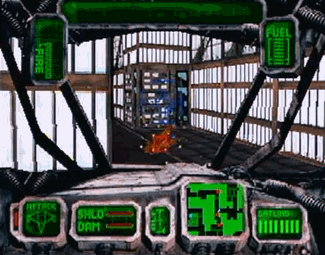 Q: I believe you've been the Producer on many a Jaguar title - Skyhammer (another flagship Jaguar title), Iron Solider 2 (ditto),
Highlander, I-War, etc. Could you talk us through just what the Producer is actually involved with and what that role was like, working within the confines of Atari? For example, did you have the resources you asked for/needed to do what you felt needed to be done, in terms of making the games happen, be marketed properly, etc?
Q: I believe you've been the Producer on many a Jaguar title - Skyhammer (another flagship Jaguar title), Iron Solider 2 (ditto),
Highlander, I-War, etc. Could you talk us through just what the Producer is actually involved with and what that role was like, working within the confines of Atari? For example, did you have the resources you asked for/needed to do what you felt needed to be done, in terms of making the games happen, be marketed properly, etc?
Ted Tahquechi: Game companies do things differently, so here is the way it worked at Atari for the role of Producer:
The Producer role is easily described as the Project Manager. I was responsible for overseeing a project from start to finish. In the early days of a project, it is very common to come up with the concept for the game, create the budget, and interview prospective developers. The early stages of a project are the easiest to see a game killed before it starts, or becoming an advocate for the project (and getting Management on your side for initial approval is a critical step).
It is also at this phase that you give Marketing the chance to add input for features or concepts.
Once the idea is a go and the development team has been chosen, securing development equipment (development consoles, etc.) and starting the full design work begins. Once the design is completed, you work with the development team to trim out features that don’t work within the development timeframe and budget. This will allow the team to determine an initial deliverables (milestone) schedule, and get to work on the game.
The middle of the project is always the toughest; waiting for 'first playable' demos and getting the engine completed always seems to take forever. Once you are at first playable, getting others involved for a second or third set of eyes is always a good plan. The first playable version of the game gives you an opportunity to scrutinize the team's work and initial implementation practices. It is at this stage where you have to take a long, hard look at the demo and compare it
to the design. It is here that you determine the design elements that need to be altered or cut and look into your crystal ball to see whether the team is really capable of completing the title with the current design in the expected timeframe and budget.
During the time between builds of the game, keeping Marketing and Management hyped on the title is always of utmost importance as well. After first playable, the Producer keeps a vigilant eye on the progress of the team and helps where possible. Alpha follows quickly in many cases after first playable - this is where the title is 'feature complete' but chocked full of bugs, and the team's really start cranking out the game content and levels, etc. Generally at Alpha is where
the Press starts seeing first glimpses of the gameplay with the caveat that there are lots of placeholder art, sounds, levels, etc. Alpha is usually where the first round of screenshots are delivered to the Press; this may explain why early shots of games can be so radically different than the final product.
During the Alpha phase, another important job is working with Marketing to develop box art, packaging, and all the marketing materials. Making sure Marketing has the materials they need to complete their portion before the game was released was sometimes a bit of a balancing act.
The second-longest part of the process for me is the time from being 'feature complete' to Beta or 'release candidate'. This is where all the tuning, testing, polish, and shine go into the title. As an external producer, I found myself literally living at the developer's for weeks at a time, helping them to resolve bugs or gameplay issues.
Getting the title done on time and on budget and just doing what it takes to get the title finished becomes the mantra of a Producer. Throughout the process, there is ample opportunity for adding to the project if there is a strength you have, whether it is in art, sound, or level design.
From start to finish during the development of any title, first and foremost the role of the Producer is cheerleader for your product. If at any time you lose faith in your developer or the team working for you, this will instill doubt in the likelihood of completing the product. So even when things are rough and the tools aren’t working and you are over-budget, keeping the “they can do it” attitude was vital.
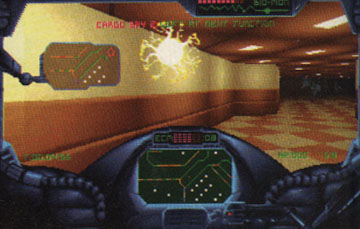 Q: Do you feel developers like Imagitec were better-suited to do conversion work for Atari (at least their games actually appeared), whereas in
cases like Freelancer and Space Junk (Jaguar CD), they switched formats (Mega CD, Falcon, and Jaguar for Space Junk; Jaguar, PS1, etc for Freelancer) and still never seemed to get very far. Word has it that screenshots of Freelancer were from the PC version. I ask as, of the top of my head, I-War was the only original title from them on the Jaguar.
Q: Do you feel developers like Imagitec were better-suited to do conversion work for Atari (at least their games actually appeared), whereas in
cases like Freelancer and Space Junk (Jaguar CD), they switched formats (Mega CD, Falcon, and Jaguar for Space Junk; Jaguar, PS1, etc for Freelancer) and still never seemed to get very far. Word has it that screenshots of Freelancer were from the PC version. I ask as, of the top of my head, I-War was the only original title from them on the Jaguar.
Ted Tahquechi: Sorry for not going into specific developer relations in this interview.
Q: What was your involvement with Defender 2000? I have to ask as I bought the game on day 1 after loving Tempest 2000 and came away rather disappointed. The bonus rounds were disappointing, the 2K Mode had a horrible, over-sized main ship, garish visuals, etc., and I know Atari had planned for it to be on CD and thought for that reason, it should have huge sprites, and Jeff Minter was going through a tough patch, personally, but again it chalks up as Atari mishandling yet another key game.
Ted Tahquechi: Other than playing it a bunch during the development process, I didn’t have any involvement with Defender 2000.
Q: It often appeared to myself that in terms of Jaguar games, Atari was at times doing little more than cloning popular titles on other systems (Checkered Flag 2 for Virtua Racing, Fight For Life for Virtua FighterB and Tekken, Highlander for Alone In The Dark, Dino Dudes for Lemmings, etc.) Now as far as 2-D titles, this wasn't such a bad move, but when it came to texture-mapped 3-D, the Jaguar wasn't simply cut out for it. Would it not have been better for Atari to push for more showcase original titles to make the Jaguar stand out?
Ted Tahquechi: There was a lot of, “Title ‘X’ is popular. We need one of those, too” at Atari. As I said earlier, the big titles like Mortal Kombat and the like are system sellers, so often the decision was made to make a “title-X” killer, but the budget for a triple-A title was just not available and the time for development of a triple-A title did not work with the operating budget. Making a great title takes a lot of time and passion from the team and support from the Management. However, the times when the big budget was authorized did not work out well for Atari, so they got a bit apprehensive to big titles. This limited developer selection to small to medium houses with very limited development times and budgets. As for ports of existing titles versus original titles, focus testing and Marketing surveys led the powers that be to the decision that original titles were not as profitable as a port of existing title, or sequels to an existing Jaguar title.
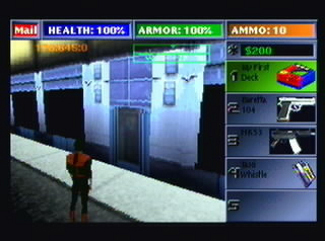 Q: If they had, we might of seen a release as planned of Skyhammer and Iron Solider 2, Black Ice/White Noise being finished...
Q: If they had, we might of seen a release as planned of Skyhammer and Iron Solider 2, Black Ice/White Noise being finished...
Ted Tahquechi: I agree about Skyhammer and IS2. As for Black Ice, you would need to talk to BJ West about that ;-)
Q: It simply seemed as if Atari was knee-jerk reacting to newer, more powerful threats - i.e. Jaguar having been designed to take on SNES/MD/3DO now found itself facing Playstation and Saturn. I’d love to hear any stories from yourself regarding how Atari viewed the threat of CD-based 32-bit hardware from Sega and Sony, what pressures they put on you/your teams, and if they really knew just how bad the outcome of trying to compete would be.
Ted Tahquechi: Producing the best games possible within the time constraints and budgets we were given was always the direction we received. There was always a lot of animosity toward top-tier developers that would decide to not work with Atari; this added a lot more pressure on the development teams both internal and external to produce triple-A titles on a shoestring budget, immature development tools, and little to no technical support for developers. It was pretty apparent where we were in the market during the last couple years there. As a last-ditch attempt at saving the Jaguar, Management brought in “axe men” to trim staff for a leaner workforce and “specialists” to get things back on track. The end result of these actions was to add excessive delays, approvals, and checkpoints to an already time-strained process of making games. At the end of the day, with the lack of triple-A titles, it was clear the Jaguar could not stand toe-to-toe with the competition.
Q: Was Atari aware of the consumer damage it had done by mishandling previous hardware when it came to the Jaguar? Things like the 7800 and STE being too little, too late, the XEGS being a poorly-conceived idea from the start, the 5200 fiasco, etc? Then there was losing developers' trust, telling them to code for the Panther, and then scrapping that and saying to code for the Jaguar.
Ted Tahquechi: I can’t really speak to what Management was or was not aware of in that respect. Sorry.
Q: You were Product Development Manager for the Atari Lynx range at one point, if my info is correct. Many people have wondered what ever became of titles like Cabal, 720, Vindicators, Rolling Thunder... and in some cases if screenshots were even real. Any information on these or other lost Panther/Lynx/Jaguar titles would be most appreciated.
Ted Tahquechi: Cabal, 720, and Vindicators were in development, but I believe were not a top priority for the developer. I had seen all but Rolling Thunder at one point or another in their development. When I moved out of the testing department and took over duties as an Associate Producer, I was assigned many of the old Lynx titles; they called me “the finisher”…
You didn’t mention Kasumi Ninja 2, Cyber Golf, Legion of the Undead… or even Uncle Oswald’s Invention… These were all titles I worked on for the Jaguar!
Q: There were claims Tiertex were converting (for US Gold) Rotox, Strider 2, Italia'90, and Leaderboard. Did you ever hear such claims?
Ted Tahquechi: Not that I can confirm.
Q: I personally think Atari did a lot of damage by promising and failing to deliver key Lynx titles such as the above, plus it was a massive missed opportunity not to have finished Alien Vs. Predator for the Lynx and had a joint AVP Lynx/Jaguar bundle with Jaguar + AVP, in with Lynx and AVP and ability to use Lynx in Jaguar AVP as a motion tracker. Atari never seemed to see the potential in such things.
Ted Tahquechi: I agree, but I think you have to understand the mindset at the time. Direction from Management was very forward-thinking and once the sights had been set on the Jaguar, everything Lynx was put on the back burner. Even though the Lynx was a very capable handheld machine, it lacked the top-tier titles to survive against Nintendo and Sega. Unfortunately, the Jaguar and Lynx seemed to share the same fate and lack of titles to have been able to really compete in a very crowded marketplace.
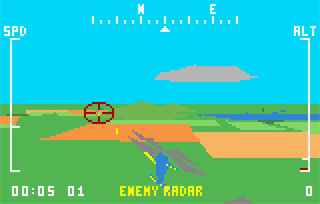 Q: You were the Producer on the stunning Lynx version of Steel Talons, which shamed the Sega MD version. Ideally, would you have
liked to convert a lot more coin-ops to the Lynx, and if so, which ones?
Q: You were the Producer on the stunning Lynx version of Steel Talons, which shamed the Sega MD version. Ideally, would you have
liked to convert a lot more coin-ops to the Lynx, and if so, which ones?
Ted Tahquechi: I loved the Lynx, and it was ultimately the reason I decided to accept the job at Atari Corp. One of the fondest memories I have of working at Atari is playing eight-player Slime World at lunch with the whole test crew. I am also a huge fan of classic arcade games. I would have loved to port games like Sinistar, Defender, Tempest, Bump 'n Jump, Spy Hunter, or Moon Cresta to the Lynx.
Q: As a Producer, what was your relationship like with A) the Press (as a lost games researcher, I find they made so much up it was unreal), and B) 3rd-party developers/publishers, in terms of gaining support for Atari? I ask - based on comments I made above - many seemed wary of trusting anything Atari said unless it was seen in person.
Ted Tahquechi: I like to think I had a good working relationship with the Press the entire time I was in the games industry. I was always honest and forthcoming with whatever I was allowed to talk about with them. In the day, the Press were seeing a whole lot of games and many of them were courted pretty
heavily by the Marketing departments in the hopes of swaying a review here and there for a game that was, shall we say, less than great. At trade shows, I was required to demo the games for the Press, and at any and all events, I was responsible for discussing and answering questions about my titles.
I was responsible for external development of mostly original titles, so I was not part of negotiations or relations with 3rd-party developers or publishers. However, I would say that your assessment of the situation is fairly accurate.
Q: Any other stories from your time at Atari you could share with us?
Ted Tahquechi: I loved working at Atari Corp. and appreciate them giving me the chance to break into the industry and become successful. I learned more about product development from my boss John Skruch during my time at Atari than I did from anyone, anywhere I have worked. During the early years, the entire crew was like a family and all worked together as a team toward a common goal. With all the years there, I should put all the stories and details down for all to read. Maybe someday.